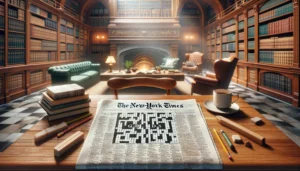As you scroll through a website, your eyes are greeted by a symphony of fonts and typefaces – some bold and attention-grabbing, others elegant and subtle. Typography is not just about choosing the right font; it is an art form that can make or break the user experience. So, what if I told you that the power of typography goes beyond aesthetics? In this article, we will explore how typography can unleash a hidden potential in web design, captivating users and conveying meaning in ways you never thought possible. Imagine stumbling upon a website that instantly captivates your attention through its clever use of type. The words seem to dance across the screen, guiding your eyes effortlessly from one section to another. With the power of typography harnessed, websites design Minneapolis can not only enhance their visual appeal but also improve user engagement and drive conversions. You find yourself engrossed in its content before even realizing it. Typography has always been an essential element in design, but today it has become more than just letters on a page – it is an integral part of creating immersive web experiences. In this article, we will delve into the world of typography in web design and discover how harnessing its power can elevate your digital presence to new heights.
The Importance of Typography in Web Design
Typography plays a crucial role in web design, shaping the overall user experience and leaving a lasting impression. The choice of fonts, sizes, spacing, and arrangement can evoke different emotions and convey specific messages. With an increasing emphasis on sleek and visually appealing designs, typography has become more important than ever in capturing users’ attention and drawing them into the website.
Beyond aesthetics, typography also impacts the accessibility and functionality of a website. Choosing readable fonts with good contrast is vital for ensuring that all users can easily consume the content. This consideration becomes particularly significant as mobile browsing continues to rise in popularity. Furthermore, well-executed typography enhances the navigation experience by providing clear headings and labels that guide users through the website seamlessly. Moreover, typography is deeply intertwined with branding as it sets the tone for a company’s identity online. Consistency across all digital platforms fosters recognition and strengthens brand recall. Businesses must carefully select fonts that align with their values and target audience to create a cohesive visual language across their web presence.
The Psychology of Typography: Understanding its Impact
Typography is more than just a tool for delivering information—it has the power to evoke emotions and shape perceptions. How we choose and arrange our fonts can greatly influence how readers interpret and engage with our content. Serif fonts, with their elegant curves and anchor points, tend to convey a sense of tradition, reliability, and credibility. On the other hand, sans-serif fonts are often associated with modernity, simplicity, and informality.
In addition to the choice of font itself, factors such as size, weight (boldness), spacing (kerning), and alignment all play a role in how typography impacts the user experience. Research indicates that larger fonts can convey a stronger message or emphasize important information. Bold text draws attention and signifies importance or urgency. Well-spaced lettering can improve readability by preventing letters from blending together. Lastly, proper alignment guides readers’ eyes smoothly across the page.
Choosing the Right Fonts for Your Website
The right fonts can make or break the overall look and feel of your website. They have the power to convey personality, evoke emotions, and enhance readability. When choosing fonts for your website, it’s crucial to consider factors like legibility, compatibility across devices, and consistency with your brand identity.
Legibility should be your top priority when selecting fonts for your website. Even if you find a fancy font that looks visually appealing, if it’s difficult to read, it will only frustrate your users and drive them away. Opt for fonts that are clear and easy on the eyes, ensuring that the text is easily distinguishable from the background. Another essential consideration is how well the chosen fonts translate across devices. Your website needs to provide a seamless experience regardless of whether users access it from their desktops or mobile devices. Selecting web-safe fonts or using responsive typography techniques can help ensure consistent visual appeal across different platforms. Lastly, remember that font choice plays a significant role in shaping your brand identity. The right combination of fonts can reflect professionalism, creativity, elegance — whatever image you want to project. Consider pairing contrasting typefaces for headings and body text to create visual interest without sacrificing coherence.
Typography Hierarchy: Creating a Visual Hierarchy with Fonts
Typography hierarchy is a fundamental aspect of web design that can significantly impact how users perceive and interact with a website. By strategically choosing fonts and organizing them in a hierarchical structure, designers can guide the user’s attention and create a visually appealing experience. One way to create typography hierarchy is by varying font sizes, using larger sizes for headlines or important information while using smaller ones for secondary content. This technique helps draw attention to the most crucial elements on the page while maintaining readability.
Another element that contributes to creating visual hierarchy with fonts is font weight. Similar to font size, adjusting the weight of different fonts can help establish importance and emphasize specific areas on a webpage. For example, bold or semi-bold fonts are often used for headings or subheadings to make them stand out more prominently from body text. Conversely, lighter weights are typically reserved for less critical content such as captions or footnotes. In addition to font size and weight, designers can also use color to further enhance typography hierarchy. Using contrasting colors for different levels of text can help distinguish between primary and secondary information easily. For instance, incorporating brighter shades for headings against neutral background colors can ensure they catch the eye immediately. Furthermore, utilizing color variations within one typeface family allows for additional depth in text hierarchies without sacrificing consistency. By carefully selecting fonts, spacing, and formatting, web designs Owatonna can create a visually appealing and engaging user experience.
Tips for Effective Typography in Web Design
Good typography can make or break a website’s design. It has the power to capture attention, evoke emotions, and guide users through the content. To create effective typography in web design, there are several key tips to keep in mind.
Firstly, choosing the right font is crucial. It should align with the overall aesthetic of the website while also ensuring readability. A well-balanced combination of serif and sans-serif fonts can add visual interest without sacrificing legibility. Additionally, hierarchy plays a vital role in guiding users’ attention on a webpage. By using different font sizes, weights, and colors, designers can create a clear hierarchy that highlights important information and makes it easy for users to scan and navigate through the content. Lastly, white space is not just an empty area; it is an essential element of typography that creates breathing room for each letter and word. By incorporating ample white space around text elements, designers can enhance overall readability and ensure that content is easily digestible for users.
Conclusion: Harnessing the Power of Typography
In conclusion, harnessing the power of typography is essential for creating captivating and effective web designs. Typography plays a vital role in conveying messages, setting the tone, and evoking emotions. By carefully choosing fonts, sizes, spacing, and other typographic elements, designers can create visual experiences that resonate with their audience.
One important aspect to consider when using typography is readability. The legibility of text is crucial for ensuring that users can easily read and understand the content on a website. Designers should prioritize clear and easy-to-read fonts to enhance user experience and prevent any frustration caused by illegible texts. Another key consideration when utilizing typography is hierarchy. Properly structuring information through typographic hierarchy helps guide users’ attention to the most important elements on a webpage. By using varying font styles, sizes, colors or spacing within a design, designers can establish a clear visual hierarchy that allows for better comprehension and engagement.
In essence, typography has the power to make or break an entire design concept. When harnessed effectively through careful consideration of readability and hierarchy principles, typography becomes a tool that enhances user experience and brings narratives to life on digital platforms. So embrace the power of typography in your web designs and let it transform your work into something truly remarkable!







